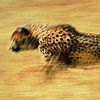从 Mask_RCNN 张量中检索信息
我已经成功地训练了一个Mask_RCNN,为了说明目的,让我们关注网络生成的这个示例图像:

一切都很好,没问题。然而,我想要实现的是具有以下变量及其每个实例的值:
mask: (as an image which shows the detected object only, like a binary map)
box: (as a list)
mask_border_positions (x,y) : (as a list)
mask_center_position (x,y) : (as a tuple)
我还有将上图可视化的函数,来自官方网站:
def display_instances(image, boxes, masks, class_ids, class_names,
scores=None, title="",
figsize=(16, 16), ax=None,
show_mask=True, show_bbox=True,
colors=None, captions=None):
"""
boxes: [num_instance, (y1, x1, y2, x2, class_id)] in image coordinates.
masks: [height, width, num_instances]
class_ids: [num_instances]
class_names: list of class names of the dataset
scores: (optional) confidence scores for each box
title: (optional) Figure title
show_mask, show_bbox: To show masks and bounding boxes or not
figsize: (optional) the size of the image
colors: (optional) An array or colors to use with each object
captions: (optional) A list of strings to use as captions for each object
"""
# Number of instances
N = boxes.shape[0]
if not N:
print("\n*** No instances to display *** \n")
else:
assert boxes.shape[0] == masks.shape[-1] == class_ids.shape[0]
# If no axis is passed, create one and automatically call show()
auto_show = False
if not ax:
_, ax = plt.subplots(1, figsize=figsize)
auto_show = True
# Generate random colors
colors = colors or random_colors(N)
# Show area outside image boundaries.
height, width = image.shape[:2]
ax.set_ylim(height + 10, -10)
ax.set_xlim(-10, width + 10)
ax.axis('off')
ax.set_title(title)
masked_image = image.astype(np.uint32).copy()
for i in range(N):
color = colors[i]
 偶然的你
偶然的你1回答
-

皈依舞
以下是正确的:masks = p['masks']class_ids = p['class_ids']rois = p['rois']scores = p['scores']bounding_box = rois[enumerator]至于轮廓坐标:def getBoundaryPositions(im): class_ids = p['class_ids'] # for usage convenience im = im.astype(np.uint8) # Find contours: (im, contours, hierarchy) = cv2.findContours(im, cv2.RETR_EXTERNAL, cv2.CHAIN_APPROX_NONE) cnts = contours[0] outline_posesXY = np.array([np.append(x[0]) for x in cnts]) # Calculate image moments of the detected contour M = cv2.moments(contours[0]) # collect pose points (for now only position because we don't have pose) of the center positionXY = [] positionXY.append(round(M['m10'] / M['m00'])) positionXY.append(round(M['m01'] / M['m00'])) return (im, positionXY, outline_posesXY)
 随时随地看视频慕课网APP
随时随地看视频慕课网APP
相关分类

 Python
Python